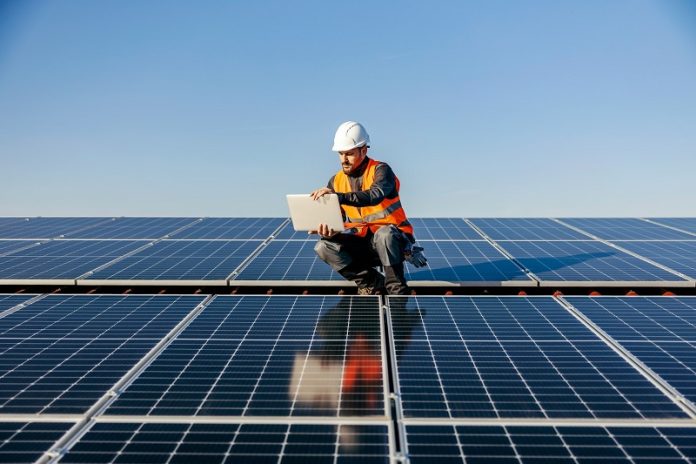
Researchers have found a way to significantly improve the efficiency of a type of solar cell called kesterite (CZTSSe) thin-film solar cells.
These cells are made from materials like copper (Cu), zinc (Zn), tin (Sn), sulfur (S), and selenium (Se), which are abundant, low-cost, and eco-friendly.
Unlike conventional solar cells that use rare metals, kesterite solar cells are cheaper and more sustainable, making them ideal for large-scale production.
However, traditional CZTSSe solar cells have struggled with low efficiency due to problems like high energy loss caused by electron-hole recombination.
This issue prevents them from competing with more common types of solar cells in the market.
To solve this problem, a research team discovered a way to improve these solar cells by adding a small amount of silver (Ag) to the cell’s materials.
By “doping” the solar cells with silver, they were able to suppress defects and promote the growth of crystals within the solar cell, which made the cells more efficient.
The key issue with CZTSSe solar cells is that they lose tin during the production process, which causes defects and energy loss.
Adding silver to the mix helps prevent this tin loss and allows the materials to blend better at lower temperatures. This, in turn, helps the crystals grow larger and with fewer defects, which greatly enhances the performance of the solar cell.
The researchers tested how placing silver at different locations within the solar cell impacted its properties.
They found that silver can drastically improve the solar cell’s efficiency by reducing defects and electron-hole recombination. However, they also learned that putting silver in the wrong spot can actually cause issues, like forming unwanted clusters of zinc and increasing energy loss.
In their study, the researchers discovered that silver forms a liquid-like material within the solar cell that speeds up crystal growth.
This results in an absorber layer that is denser and has better crystallinity. This improvement in the cell’s structure reduces defects and allows for smoother transport of electric charges.
The research team included experts from the Division of Energy & Environmental Technology at DGIST, and they collaborated with teams from Incheon National University and the Department of Electronic Materials Engineering. Kee-jeong Yang, one of the lead researchers, explained that this study is the first to identify the exact role of silver in suppressing tin loss and fixing defects.
The study provides valuable insights into how to design silver-doped solar cells for better efficiency. This breakthrough is expected to help in developing high-performance solar cells that are affordable and sustainable, opening up new opportunities for solar energy technology.
By making solar cells more efficient and cost-effective, this silver-doping technology could play a key role in advancing the future of renewable energy.



